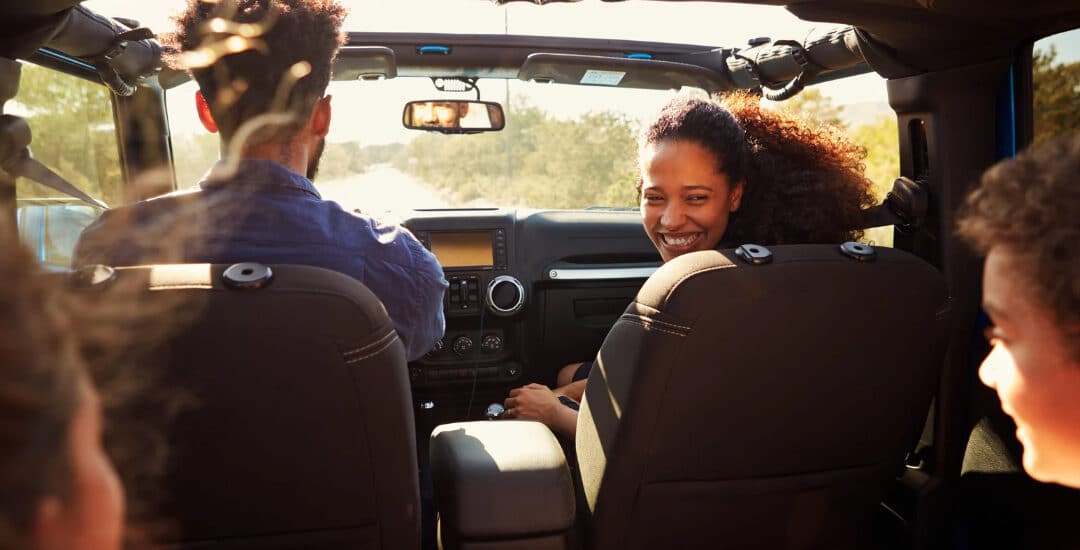Turn your next drive with your kids into a meaningful moment. Whether it’s a quick trip to the store or a longer journey, being in the car together can spark conversation. It’s the perfect chance to connect and dive into the little things that matter most. With fewer distractions, the car becomes a place where stories flow, questions unfold, and you create memories that last beyond the ride. Here are some guidelines to get the conversation started.
Create an Inviting Atmosphere for Great Conversations
- Ensure it’s easy to listen and be heard by keeping distractions to a minimum—turn down the radio and ask everyone to stow away devices.
- Mix up the topics with a balance of fun and thoughtful discussions that match your child’s age and interests.
- Keep the vibe upbeat and supportive—focus on connecting rather than correcting.
- Engage by listening just as much as talking. Listening is the key to deepening your bond.
- Encourage open dialogue by asking questions that spark more than a yes or no response.
- If the conversation doesn’t flow right away, stay patient and keep the lines of communication open.
Creative Ways to Build Stronger Connections
Try any of these creative approaches to tap into topics that are meaningful to your child or teen.
Hobbies and Interests:
Whether your kids are into sports, art, reading, or something else, ask them about it. Your interest shows that their hobbies matter and helps boost their confidence. Inquire about the latest scrimmage, the book they’re reading, their favorite TV show or another beloved activity. You will want to show genuine curiosity and pose follow-up questions. Remember, your role isn’t just to guide, but to celebrate their unique interests and growth.
New Technology:
There are plenty of fun, new gadgets and apps that help us manage our world. Talk with your children about some of the latest tech. Then reveal what the world was like, before they were born, without this technology. Help them imagine what it was like with an engaging story or two. Ask them what new technology of the future should be invented. You never know how that might inspire them.
Current Events:
Talking about social media trends or other age-appropriate current events with your teens is an opportunity to teach them about the world and develop their critical thinking. Encourage them to share their thoughts and opinions, asking open-ended questions like, “How do you feel about what’s happening?” or “What do your friends think about this?” These discussions can help them process information, understand different perspectives, and build a sense of empathy and awareness. Create a safe space for them to ask questions or express concerns.
Role Plays:
Car rides can be the perfect time to role-play with your child and help them work through different problems in a relaxed setting. You can create scenarios based on challenges they may face, like dealing with a disagreement at school or preparing for a big test. By playing different roles, you can guide them to think through solutions, practice how to respond, and build confidence in handling tricky situations. It’s a great way to engage their problem-solving skills. Plus, the casual environment of the car makes it feel less pressured for both of you.
Fun and Silly:
For a lighthearted and engaging conversation with your kids, try mixing in some fun and silly questions. Ask them, “If you were an animal, what would you be?” or “What food could you eat every day for the rest of your life?” These boredom-busting questions can spark creativity and laughter. You might also ask, “If you could switch places with anyone in the world, who would it be?” or “If you could change your name, what would it be?” For an extra challenge, try speaking only in questions to keep the conversation flowing in unexpected ways. And when all else fails, throw in a dad—or mom—joke to lighten the mood!
Driving Safety:
Being in the car is a natural time to talk about vehicle safety. Again, keep the conversation age appropriate. If you have a teen, point out decisions that you make as you drive, and share safety tips such as how to safely pull over on the side of the road. Note the dangerous behaviors that you see from other drivers such as tailgating. Get them ready to focus on the road by asking them to navigate and tell you where you should turn. For younger passengers, point out road signs for stop, yield and crosswalks. Ask them what they notice when looking outside the window. Talk about why we wear seatbelts and what could happen if we forget. Teach them safety around vehicles.
Finally, you’re traveling with precious cargo when you transport your family. Make sure your car is well-maintained and protect it with the right car insurance. Safe travels.
This article is furnished by California Casualty, providing auto and home insurance to educators, law enforcement officers, firefighters, and nurses. Get a quote at 1.866.704.8614 or www.calcas.com.
- Hazards in Older Homes - December 30, 2025
- Creative Storage Hacks for Small Apartments - December 26, 2025
- Tires 101: Rotation, Alignment and Balancing Explained - December 22, 2025

